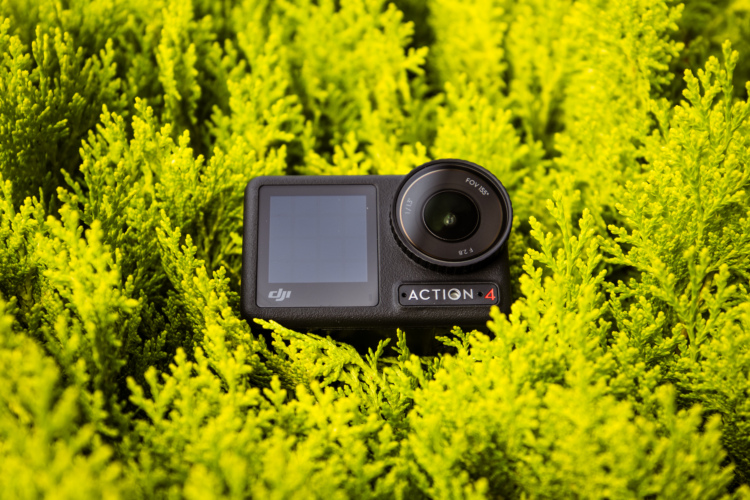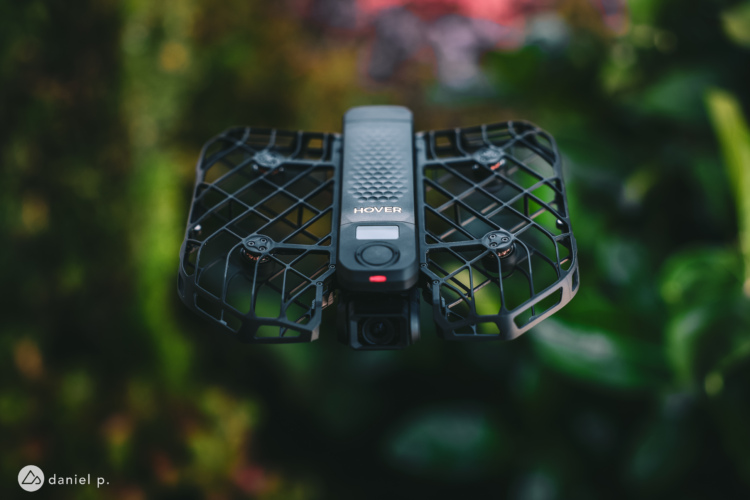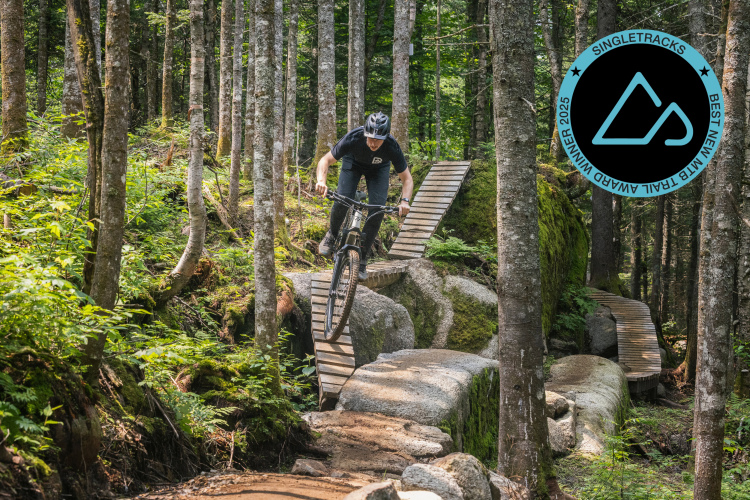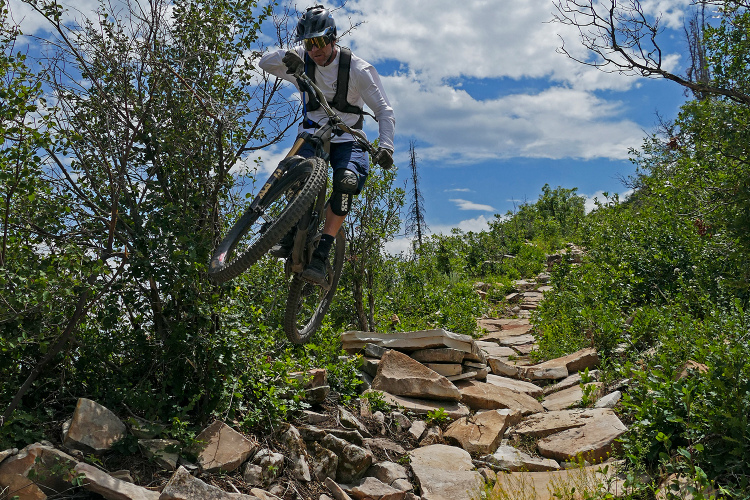
Not long ago, I reviewed the DJI Osmo Action 4, which, I say, is still a great action camera. DJI has done a great job creating easy-to-use interfaces for their products — I mean, they helped many of us to learn and fly tiny helicopters! I find their UI pleasant and exciting compared to action cameras from other brands that I have owned in the past. With the new Osmo Action 5 Pro, there are more features than before, and I was intrigued to see how it compares to the Osmo Action 4.
DJI Osmo Action 5 Pro camera specs
- Next-Gen 1/1.3″ CMOS with 13.5 stops of high dynamic range
- 4K/60fps high-dynamic, low-light imaging
- Dual touch screens
- Approximately six hours operating time
- Price: starting at $349
- Buy from Amazon
As I learned, DJI did add many “Pro” features to help content creators enhance their high-quality videos. I’ll mention some of the features, but I will touch on the three particular features that stand out to me as a mountain biker. If you want to geek out at all the features, check out all the details here.

Design and features overview: Compact, durable and techy
The new Osmo Action 5 Pro has the same overall rugged design as the Osmo Action 4 with some slight aesthetic and functional differences. The Osmo Action Pro 5 weighs 145g on my scale, while the Osmo Action 4 weighs 147g. Two grams lighter with more features crammed in gets a thumbs up from me.
The new camera still fits in the palm of your hand and fits in just about any bag or pocket. And you can still use the included accessory cage to record vertical video just like before. The small and rugged design should withstand water, sand, dirt, and rocks during your mountain biking adventures. The three microphones have been redesigned and relocated to provide optimal clarity.

Similar to the Osmo Action 4, the Osmo Action Pro 5 has two touch screens, one at the back and one at the front. The great thing is that these new screens are about 16% bigger, are now use OLED technology, with peak brightness levels of 1000 nits on the back screen and 800 nits on the front screen, which is great for viewing in bright, outdoor environments.
The camera now offers higher wireless transfer speeds, up to 80MB/s via Wi-Fi 6.0. This can come in handy when trying to quickly offload footage onto your phone. A new feature that shocked me is the built-in 47GB of memory storage. In all my years of using different types of action cameras, this is the first time that I have seen built-in memory storage. There have been a handful of times when I forgot my microSD card at home and was not able to record my mountain bike ride.

Higher capacity lithium-ion 1950 mAh batteries help the Osmo Action Pro 5 run longer without interruptions. This extra bit of battery juice is helpful when recording in the newly supported 4K/120 frames per second (fps) frame rate. If you are all about video quality and editing ability, the 10-bit D-Log format will preserve more color information, which allows for post-production color grading. All of these capabilities come with the help of their next generation four nanometer chip and new 1/1.3-inch CMOS sensor. The sensor offers a dynamic range of 13.5 stops, which, as I’ll explain, is an important feature for mountain bikers.

Low-light performance
I often find myself mountain biking through a mix of shaded, low-light trails with overly bright exposed areas peeking through the trees. Action camera companies have tried to balance this fluctuation of light coming in by improving camera sensors and/or software over the years.
DJI gave the Osmo Action Pro 5 a next generation 1/1.3 inch CMOS sensor delivering as much as 13.5 stops of Dynamic Range. If you are wondering what CMOS sensors are, they are semiconductor image sensors that convert light into electrical signals which then are turned into images and video.
Now let’s talk about Dynamic Range. Dynamic Range is the range of light intensities (stops of light) a camera can capture. This can be measured using a Dynamic Range test chart (pictured above) that can range from 0 to 20 stops. The higher the stops you go up in the chart, the more the camera sensor can “see” detail in low light. DJI claims that it can capture up to 13.5 stops in all video specifications. That amount of light stops is typically seen in pro consumer photography and videography cameras; even newer Pro iPhone cameras have up to 12 stops of Dynamic Range.

A camera with a higher number of stops will give it more options for the light intensities that it can process. However, recording at such high stops could render your footage unusable. This is because of the loss of detail and low-light noise that occurs when you’re recording in dark environments at high stops of light. Luckily, modern cameras, like the Osmo Action Pro 5 will select and use the most composed settings based on the smart algorithmic decisions and noise reduction software built in. For example, the 4K/60fps video specification will give high-dynamic low-light imaging, while the SuperNight 1080p/30fps mode enhances nighttime recording with AI noise reduction.
So what does this mean for Mountain Bikers recording video? In ever-changing lighting environments, like trails with dark and bright sections, the DJI Osmo Action Pro 5 sensor can capture that wide range of light intensity, while also processing all the data quickly and efficiently through their next generation four nanometer processing chip. The result is footage that doesn’t look too bright and washed out, or too dark and noisy. It’s an almost “perfect” light balance, if I must say, for a small action camera. Although I wouldn’t compare this camera sensor to a prosumer-level camera sensor, I must give DJI credit for raising the bar for what an action camera is capable of.
Long-lasting recording times
The DJI Osmo Action Pro 5 can continuously record for about four hours with thanks to improved processing efficiency and the new 1950mAh battery that’s included. Previous generation cameras came with 1770mAh batteries and claimed 50% less max operating time than this new camera. I did not get a chance to record a continuous four-hour ride video, but I can say that one battery lasted me all day, while recording in 4k.
If you do manage to drain your battery, the quick USB-C charging allows fast charging, giving two hours of shooting with just fifteen minutes of charging. If you still need more power, the Adventure Combo will add two more 1950mAh batteries, and a compact charging battery case to keep batteries in rotation when needed. Having enough battery power to record mountain bike adventures, whether it’s POV or vlogging, can be crucial. I think many riders will be happy with the increase in battery operating time.

Built-in memory storage
I honestly don’t know why having built-in memory storage is not standard practice in the camera world. It seems like the DJI team has picked up on this, thus deciding to add 47GB of built-in storage to the Osmo Action Pro 5. There should be plenty of storage to get some recording of your adventure that would otherwise not have been recorded if you had forgotten your memory card. I know for a fact I will forget a swappable memory card at some point, and will silently thank DJI for adding 47GB of built-in memory for me to use as back up! If you aren’t like me and always remember to bring your memory card, the camera will accept microSD cards up to 1TB.


Bonus features
In addition to the three main improvements above, there are additional honorable-mention features that mountain bikers will appreciate. A 155° ultra-wide field of view offers the widest in the industry, showing more of the trail in front of you.
DJI delivers amazing digital image stabilization, and they have added two stabilizing modes, which are Sport and Daily mode. Sport mode will prioritize stabilization for activities like running and cycling. Daily mode can be used for walking and low-light conditioning environments. The quick to select Sport mode can come in handy for mountain bikers, offering rock solid stabilization.
Built-in Wi-Fi 6.0 delivers high speed transfers up to 80 MB/s. This is something I wanted based on my Osmo Action 4 test, particularly when using the DJI App. If you prefer plugging the camera into a computer, the camera also supports USB 3.0 transfer speeds.
The improved built-in microphones are great, but if you want to get higher quality audio, you can connect up to two DJI Mic 2s.

Final thoughts
The new DJI Osmo Action Pro 5 is as easy to use and intuitive as its predecessor. It’s impressive they were also able to reduce the price of the Standard Combo, which makes it very competitive in today’s action camera market.
And DJI offers a plethora of accessories to suit your adventure needs. They even have a Mountain Cycling Combo that includes an adjustable handlebar mount and chest strap mount. You can then buy other accessories a la cart if you desire.
If you have been holding off on buying an action camera, the Standard Combo is an excellent starting point, and if you happen to have other branded action camera accessories, you can use them with this combo. DJI is pretty knowledgeable in the camera industry and things can only get better, as we’ve see with this DJI Osmo Action Pro 5 camera.
Now, I’m excited to see how they could integrate communication between the camera and their upcoming electric assist mountain bike. The future looks electrifying!
- Price: starting at $349
- Buy from Amazon











1 Comments
Oct 18, 2024